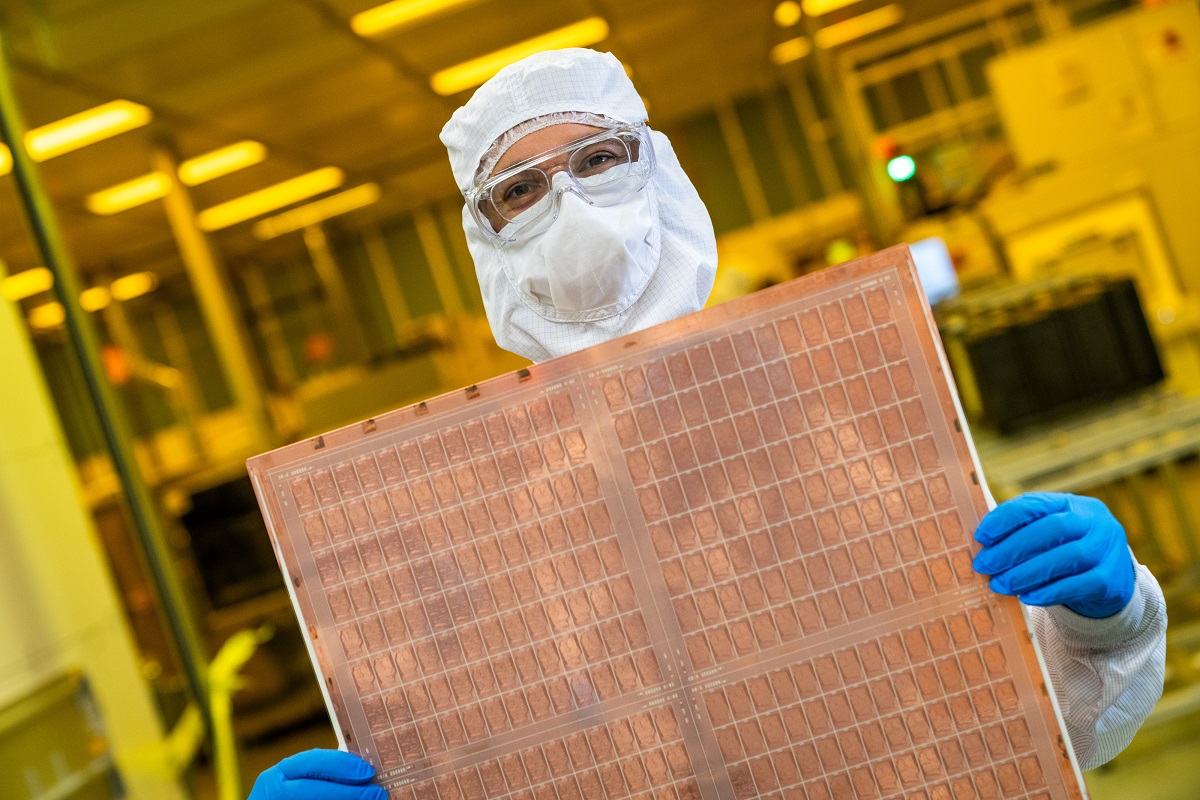Intel, the multinational technology company, has reported a third-quarter revenue of $14.2 billion, which is an 8% decrease compared to the same period last year. However, the company’s earnings per share (EPS) exceeded expectations, with a non-GAAP EPS of 41 cents a share, up 21 cents from Intel’s July expectations.
The strong operating leverage and expense discipline contributed to the increase in EPS, while the gross profit margins were 45.8%, surpassing the company’s previous expectations. Intel also announced that it achieved significant milestones in various areas, including process and product, foundry, and artificial intelligence (AI).
Looking ahead, Intel is guiding revenue expectations for the fourth quarter to be between $14.6 billion and $15.6 billion, with an EPS of 23 cents a share and a non-GAAP EPS of 44 cents a share. The company’s stock has risen by 6% in after-hours trading as it outperformed expectations.
CEO Pat Gelsinger emphasized the progress made in Intel’s IDM 2.0 transformation, stating that the company’s strategy is centered around regaining transistor power and performance leadership. Gelsinger also highlighted the success of their five nodes and four-year journey, which has resulted in nearly 150 million units of chip products already in the market.
On the financial front, Intel aims to reduce costs by $3 billion in 2023, with $1.8 billion in costs already cut through various divestitures. The company’s focus on being efficient and unlocking value for shareholders has exceeded expectations for the third consecutive quarter.
Intel recently announced the integration of its Accelerated Computing Systems and Graphics Group into its Client Computing Group and Data Center and AI Group. This change is intended to drive a more effective go-to-market capability and reduce costs. As a result, the company modified its segment reporting in the first quarter of 2023 to align with these business reorganizations.
In terms of business unit revenue, the Client Computing Group reported a revenue of $7.9 billion, while the Data Center and AI Group reported a revenue of $3.8 billion. The Network and Edge group reported a revenue of $1.5 billion, mobileye revenue was $530 million, and Intel Foundry Services reported revenue of $311 million.
Intel’s advancements in technology and product development were highlighted, including the achievement of key milestones in advanced packaging technologies. The company remains on track to achieve its goal of five manufacturing nodes in four years and regain transistor performance and power performance leadership by 2025.
Intel has also made significant investments in manufacturing capacity, opening Fab 34 in Leixlip, Ireland, during the quarter. The company aims to create a leading-edge semiconductor manufacturing value chain in Europe with planned facilities in Germany and Poland.
CEO Pat Gelsinger compared Intel to competitors like TSMC, emphasizing that Intel is the only leading-edge semiconductor manufacturer at scale in every major region of the globe. The company is focused on modernization and infrastructure expansion, with plans to install the world’s first high-NA EUV tool and submit major manufacturing proposals in different states.
On the product side, Intel’s 4th Gen Intel Xeon Scalable processors have been well-received by cloud service providers, and the company’s 5th Gen Intel Xeon processor is now in production. Intel is also investing in AI supercomputers and introducing the Intel Core Ultra processors.
Looking ahead, Intel sees potential growth in the PC market and is exploring opportunities to unlock value for shareholders. The company plans to separate its Programmable Solutions Group (PSG) into a standalone business to accelerate its growth in the FPGA industry.
Overall, Intel’s third-quarter results showcase the progress made in its transformation strategy and its commitment to innovation and growth in various sectors.




